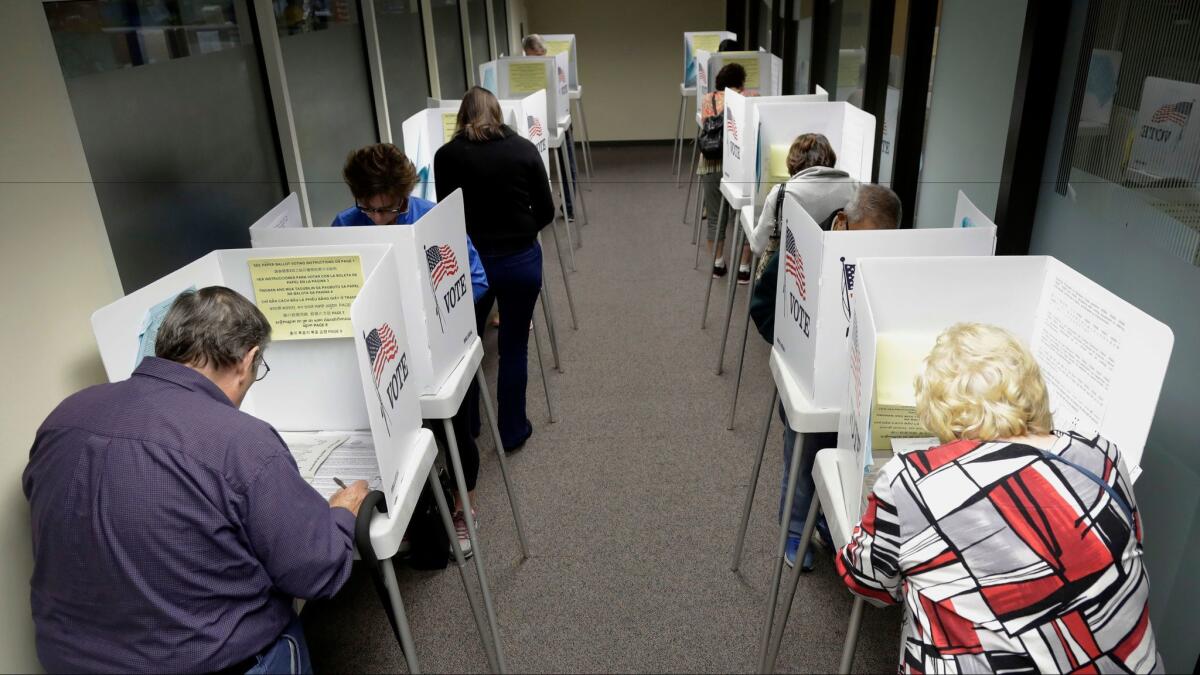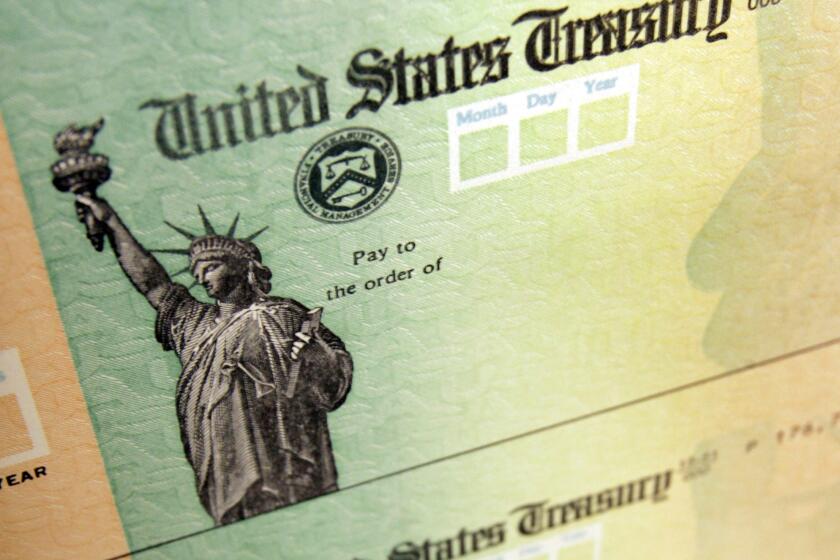Column: California’s free-for-all primaries have left things unsettled, but voters don’t want to go back to the old ways

- Share via
Reporting from Sacramento — The home stretch of California’s statewide primary election is here, and all the big questions in this political season have one thing in common.
They begin with the disruptive nature of the top-two primary, an electoral juggernaut that the political party leaders hate and the candidates treat, at best, with lukewarm praise.
Voters, though, aren’t looking back. They seem happy to be rid of the traditional way of running primaries.
California’s free-for-all primary rules could surprise everyone... again »
In a new USC Dornsife/Los Angeles Times poll, just 10% of registered voters gave a thumbs up to what we now call a “closed primary” — the vintage system where the members of a political party pick their own nominee to appear on the general election ballot. Outsiders, be they voters who belong to another party or unaffiliated “independents,” aren’t welcome.
That system was in place for most of California’s modern history, but even at the beginning, its flaws were well known. A reporter covering the California Legislature in 1909, Franklin Hichborn, wrote at the time that the “direct primary,” as it was known then, “made it smooth sailing for the mere partisan and extremely hard for the independent Republican or independent Democrat to secure [the] party nomination.”
In 1996, voters replaced it with an open primary system that allowed all voters to pick the nominees of the political parties. Democrats and Republicans challenged it in the U.S. Supreme Court in 2000 and won, saying it was unfair to force them to allow nonmembers to pick their party’s anointed choice. The top-two primary, enacted by voters in 2010, got around that problem by stripping the parties of a guaranteed spot on the November ballot altogether.
California’s illegal immigration fight is back, and so are the political pitfalls for Republicans »
Fifty percent of registered voters in the poll said they like the top-two primary. But political parties would regain at least some of their power under a scenario preferred by 40% of voters who were surveyed: A primary where independent voters were the only ones who could play in a party’s June election. It’s unclear, though, whether such a system would meet the constitutional standard set 18 years ago. A party can have the option of allowing independent voters to participate in the primary, but it’s less likely they can be forced to do so.
The popularity of the idea in the poll, though, is probably a result of the top-two primary’s most unusual provision: The final candidates can be from the same party, the kind of electoral shutout for everyone else that happened in the U.S. Senate race two years ago and now threatens to upend races from governor down to regional contests for the U.S. House.
Those kinds of same-party contests have a lack of heterogeneity, the kind that some believe alienates voters who don’t see anyone with their values on the ballot. In the November 2016 Senate race that featured two Democrats, there were 1.9 million fewer ballots cast than in the race for president and fewer than in any of that fall’s statewide ballot propositions. Clearly, a number of voters skipped the race altogether.
And yet 79% of registered voters in the poll said they would still vote in a race if their preferred party had no candidate on the fall ballot.
Make no mistake about it, on the topic of open versus closed primaries, the political parties would be fighting an uphill battle if they tried to go back to how things used to be.
“It would be fixing something people do not think is broken,” said Mike Murphy, a GOP strategist and advisor to the poll.
That probably explains why a recently rumored effort to put the issue to voters never got off the ground. For better or worse, the era of the closed primary is likely gone for good.
Follow @johnmyers on Twitter, sign up for our daily Essential Politics newsletter and listen to the weekly California Politics Podcast
Jill Darling, survey director of the USC Dornsife Center for Economic and Social Research, contributed to this report.
View the poll methodology here
More to Read
Get the L.A. Times Politics newsletter
Deeply reported insights into legislation, politics and policy from Sacramento, Washington and beyond. In your inbox three times per week.
You may occasionally receive promotional content from the Los Angeles Times.











